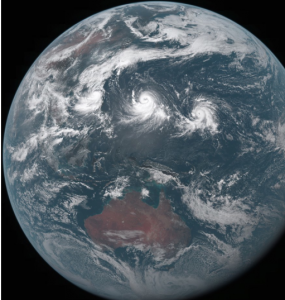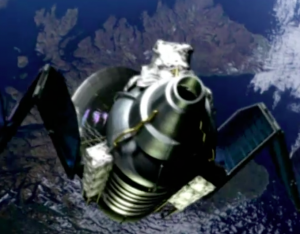By now you should have watched the video about satellites. This screenshot showing a satellite passing over the Highlands was taken from about 17 minutes into the programme – did you notice at the time?
It was quite eye-opening to see just how much modern society relies on satellite technology. I’ve got some more examples of the uses for satellites below.
A satellite moves horizontally at constant speed but also accelerates vertically towards the planet’s surface due to gravity. Thankfully, the curvature of the Earth means the satellite doesn’t crash but keeps on orbiting the planet.
Satellites can be used for environmental purposes, such as
monitoring volcanoes
weather forecasting

climate change
deforestation
earthquakes
The higher a satellite’s orbit, the longer it takes to complete one orbit of the Earth. The time to complete one orbit is called the period of the satellite. At an altitude of 36,000km, a satellite positioned above the equator takes 24 hours to complete one orbit of the Earth. In other words, a satellite at this height always sits above the same spot on the Earth’s surface. You don’t need to change the position of your Sky dish because the Sky satellite always sits in the same location above the Earth. It is a geostationary satellite.
Some of these geostationary satellites are used to form part of the telephone network, others broadcast tv signals back to Earth. Most communication satellites are placed in a geostationary orbit.
If you were able to see the Earth from the perspective of a geostationary satellite, your view would look like this.
Or course one of the dangers of launching so many objects is that we add to the space junk that is already littering the orbital space around our planet.

